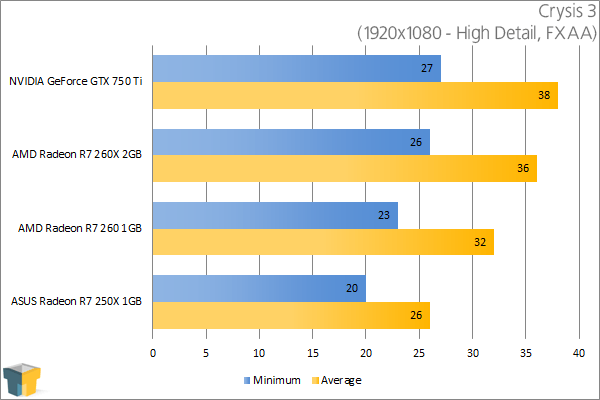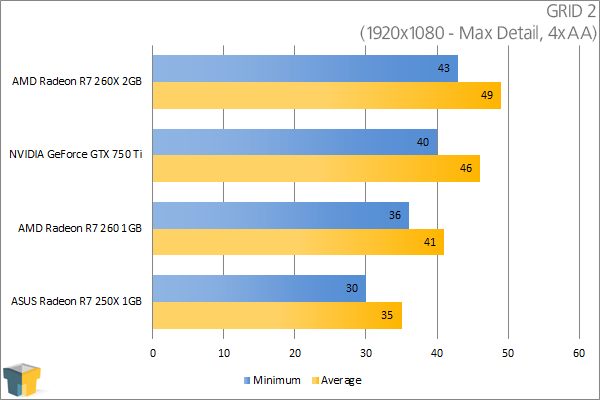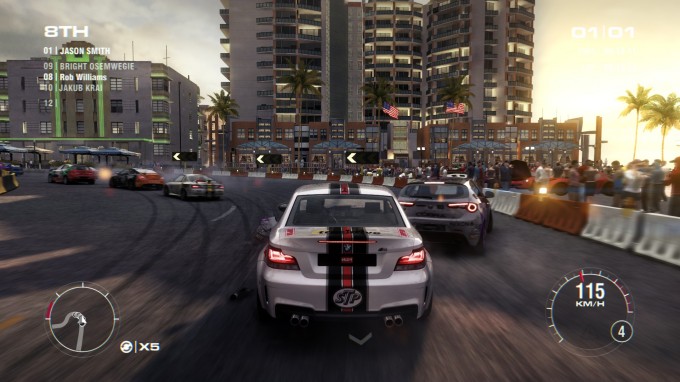- Qualcomm Launches Snapdragon 4 Gen 2 Mobile Platform
- AMD Launches Ryzen PRO 7000 Series Mobile & Desktop Platform
- Intel Launches Sleek Single-Slot Arc Pro A60 Workstation Graphics Card
- NVIDIA Announces Latest Ada Lovelace Additions: GeForce RTX 4060 Ti & RTX 4060
- Maxon Redshift With AMD Radeon GPU Rendering Support Now Available
How Low Should You Go? ASUS Radeon R7 250X Graphics Card Review

After we were done benchmarking AMD’s $110 Radeon R7 260 last winter, we were impressed enough to call it a “console killer” (thanks in part to the ‘next-gen’ consoles having been released not soon before). Will we be able to say the same thing about the R7 250X, a model a mere one-step down? That’s what we’re going to find out.
Page 4 – Game Tests: Crysis 3, GRID 2
When the original Crysis dropped in late 2007, it took no time at all for pundits to coin the phrase, “Can it run Crysis?“, almost to the point of self-parody. At the time, the game couldn’t have its graphics detail maxed-out on even top-of-the-line PCs, and in reality, that’s a great thing. I’d imagine few are opposed to knowing that a game could actually look better down the road as our PCs grow into them. As the series continued, Crytek knew it had a legend to live up to, and fortunately, Crysis 3 (our review) lives up to the original’s legacy.
Manual Run-through: There’s no particular level in Crysis 3 that I could establish was “better” for benchmarking than another, but I settled on “Red Star Rising” based on the fact that I could perform a run-through with no chance of dying (a great thing in a challenging game like this one). The level starts us in a derelict building, where I traverse a broken pipe to make it over to one rooftop and then another. I eventually hit the ground after taking advantage of a zipline, and make my way down to a river, where I scurry past a number of enemies to the end spot beneath a building.

The Crysis name is pretty synonymous with a brutal GPU beatdown, but interestingly, it was with Assassin’s Creed IV that these low-end cards really suffered with. We’re still by no means near playable levels, but it’s nice to see each card performing as well as it does given the high graphics levels we’re dealing with.
GRID 2
For those who appreciate racing games that are neither too realistic nor too arcade-like, there’s GRID. In GRID 2 (review), the ultimate goal is to build a racing empire, starting from square one. Unlike most racing titles that have some sort of career, the goal here isn’t to earn cash, but fans. Whether you’re racing around Abu Dhabi’s Yas Marina or tearing through a gorgeous Cote d’Azur coastline, your goal is simple: To impress.
Manual Run-through: The track chosen for my benchmarking is Miami (Ocean Drive). It’s a simple track overall, which is one of the reasons I chose it, and also the reason I choose to do just a single lap (I crash, often, and that affects both the results and my patience). Unlike most games in the suite which I test twice over (save for an oddity in the results), I race this one lap three times over.

GRID 2 becomes the first game that the R7 250X broke through the 30 FPS mark at. When you consider that most console games are locked to that, and also the fact that this test involved maxed-out detail levels, that’s pretty impressive.
Support our efforts! With ad revenue at an all-time low for written websites, we're relying more than ever on reader support to help us continue putting so much effort into this type of content. You can support us by becoming a Patron, or by using our Amazon shopping affiliate links listed through our articles. Thanks for your support!







